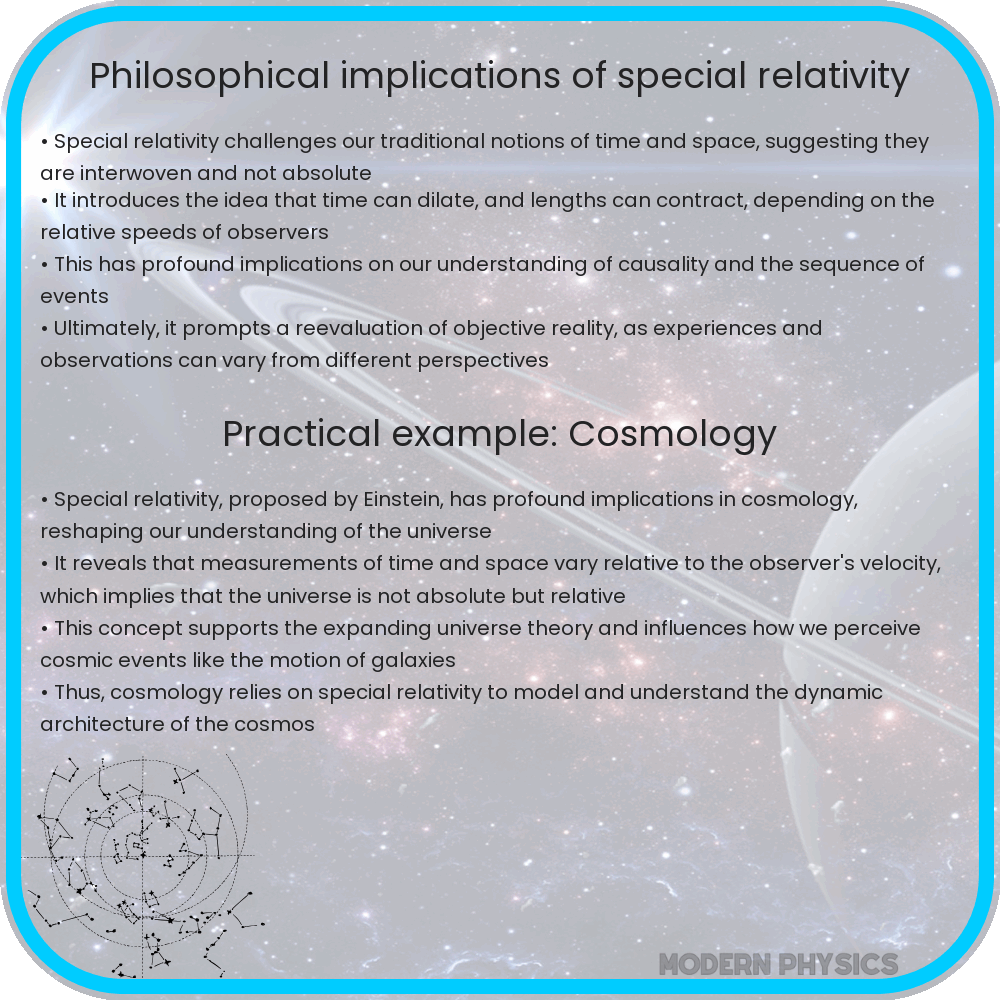Special Relativity is a theory by Albert Einstein, explaining relationships between space and time, asserting the constancy of light speed across inertial frames.

Introduction to Special Relativity
Special Relativity is a fundamental theory formulated by Albert Einstein in 1905. It addresses the relationship between space and time, which are woven together into a four-dimensional continuum known as spacetime. The theory revolutionized our understanding of physics by describing how the laws of physics are the same for all non-accelerating observers, and how the speed of light (c) is constant in all inertial frames of reference.
Understanding Time Dilation
One of the most intriguing phenomena predicted by special relativity is time dilation. Time dilation occurs because the observed time measured by a clock in a moving frame of reference differs from the time measured by a stationary clock. According to Einstein’s theory, as the speed of an object approaches the speed of light, time for the object moves slower relative to an observer at rest. This can be described mathematically using the Lorentz factor (γ), which is defined as:
γ = 1 / √(1 – v2 / c2)
Here, v is the velocity of the moving object, and c is the speed of light in vacuum. As v approaches c, γ increases dramatically, indicating significant time dilation.
Exploring Frame of Reference
A frame of reference in special relativity refers to a viewpoint or a state of motion from which a set of objects or events are observed. There are primarily two types of frames—inertial and non-inertial. An inertial frame of reference moves at a constant velocity, meaning it is either at rest or moving with a constant speed in a straight line. Conversely, a non-inertial frame of reference accelerates, either in terms of speed or direction.
Special Relativity primarily deals with inertial frames, asserting that the laws of physics are identical in all inertial frames of reference, irrespective of their constant velocity relative to one another. This postulate leads to fascinating effects such as length contraction, alongside time dilation.
Understanding Causality in Special Relativity
Causality, or the relationship between cause and effect, remains an essential aspect of physical law which is preserved in the framework of special relativity. This theory preserves the causal order of events, meaning that if event A causally affects event B in one frame of reference, this relationship holds in all frames of reference. This preservation is crucial for the consistency of physical laws across different observers.
Time dilation and the invariance of the speed of light ensure that information or matter cannot travel faster than light, thereby preserving causality. Essentially, this means that no effect can precede its cause in any frame of reference, safeguarding against paradoxes such as the “grandfather paradox” in time travel scenarios.
Length Contraction in Special Relativity
Alongside time dilation, special relativity also predicts the phenomenon of length contraction. This effect asserts that objects moving at speeds close to the speed of light will appear shorter in the direction of motion when observed from a stationary frame of reference. This contraction only affects the dimensions parallel to the direction of motion, leaving those perpendicular unaffected.
The mathematical description of length contraction can be represented as:
L = L0 / γ
Where L0 is the proper length (the length of the object in its rest frame) and L is the observed length. This effect, much like time dilation, becomes significant only as the velocity of the object approaches the speed of light.
Implications of Special Relativity in Modern Physics
Special Relativity has profound implications not only in theoretical physics but also in practical applications. For example, the Global Positioning System (GPS) needs to account for the effects of both special and general relativity to provide accurate location data. Without corrections for time dilation due to the relative speeds of the satellites and the differences in gravitational potential, GPS devices would accumulate errors very quickly, leading to significant inaccuracies.
In theoretical physics, special relativity has paved the way for further developments, most notably the theory of General Relativity, which extends the theories of motion to non-inertial (accelerating) frames of reference and incorporates the role of gravity.
Conclusion
Special Relativity, though over a century old, continues to be a cornerstone of modern physics. Its predictions of time dilation, length contraction, and the constant speed of light irrespective of the observer’s frame of reference challenge our everyday notions of time and space. By firmly establishing the speed limit of the universe, special relativity not only preserves causality but also prompts us to rethink fundamental concepts such as simultaneity and the flow of time. As we continue to explore the universe, the principles of special relativity will undoubtedly guide and refine our understanding of the cosmos and its myriad phenomena.
